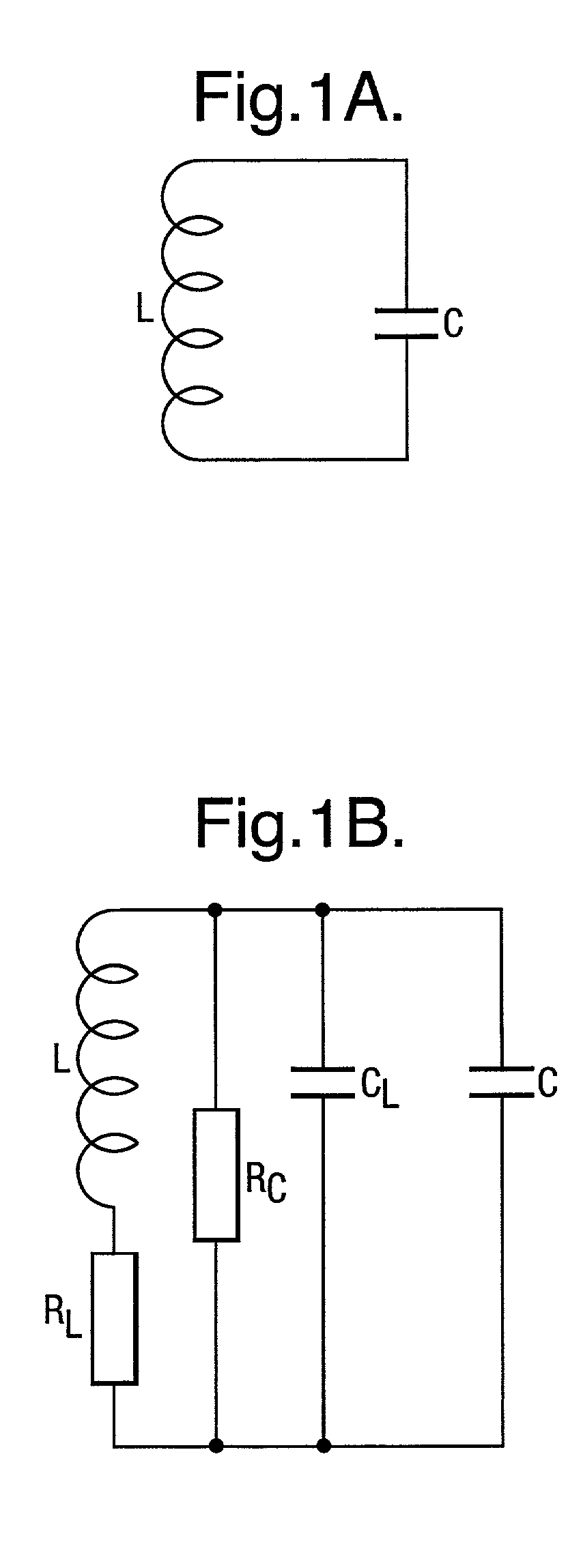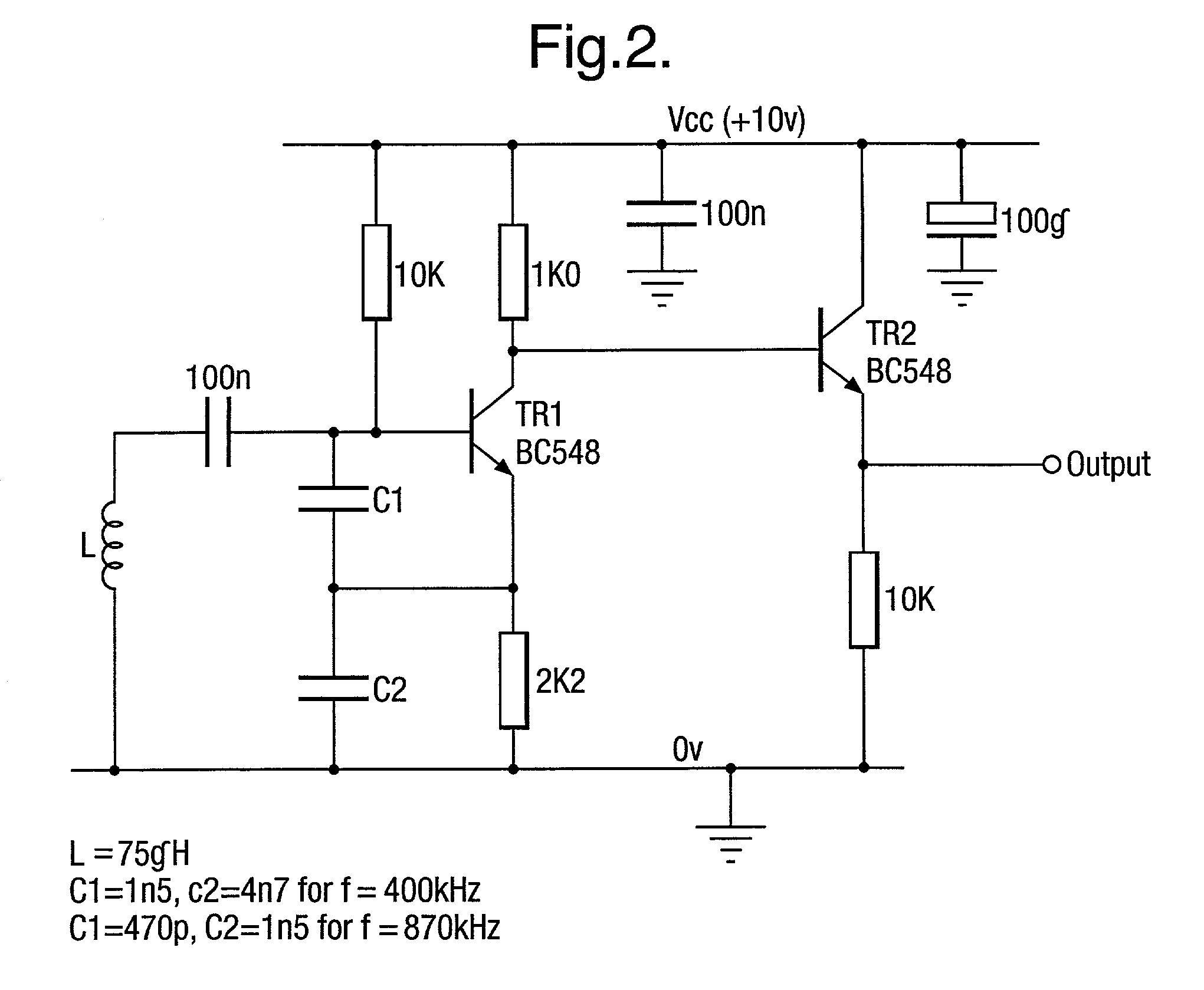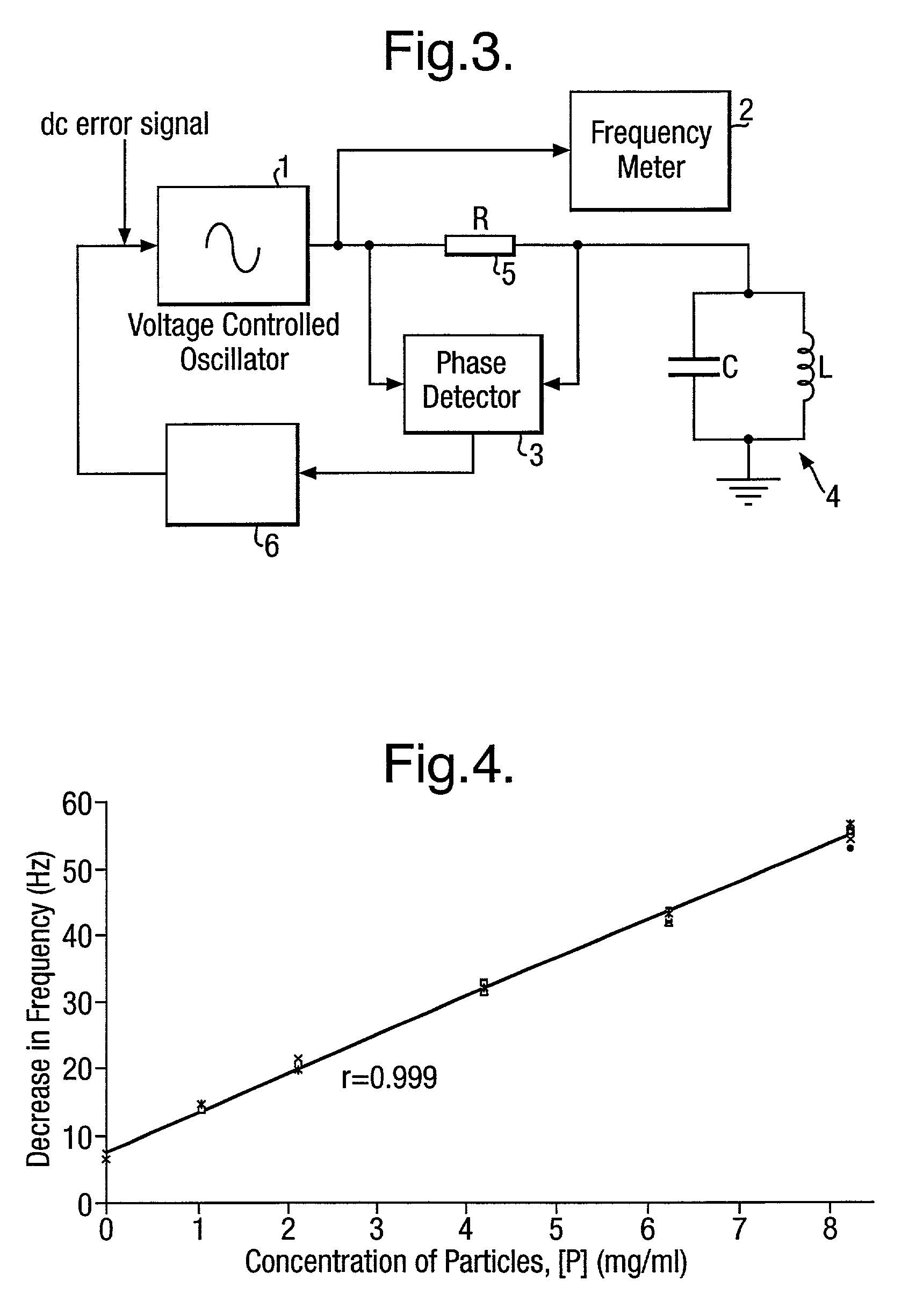Paramagnetic particle detection
a technology of magnetism and particle, applied in the direction of magnetic property measurement, electrical testing, masers, etc., can solve the problems of reducing the number of analytical steps, changing the inductance of the coil, and speeding up the time required for an assay
- Summary
- Abstract
- Description
- Claims
- Application Information
AI Technical Summary
Benefits of technology
Problems solved by technology
Method used
Image
Examples
Embodiment Construction
[0047] In one example of the present invention, the number of coated paramagnetic particles on a plastic strip is determined by placing the strip in a coil of insulated wire and observing the effect their presence has on the self-inductance, L, of the coil. The assumption is that the only significant contribution to changes in the inductance of the coil comes from the high magnetic permeability of the particles.
[0048] The self-inductance of a uniform helical coil with a large number of turns is given by:
L.apprxeq..mu..mu..sub.0m.sup.2lA (1)
[0049] where:
[0050] .mu..sub.0=permeability of a vacuum (4.pi..times.10.sup.-7 H m.sup.-1);
[0051] .mu.=relative permeability of the core;
[0052] m=number of turns per unit length;
[0053] l=length; and,
[0054] A=cross-sectional area of the coil.
[0055] When a plastic strip, with n paramagnetic particles attached to it, is placed in the coil, the effective value of .mu. for the coil is some value related to the individual permeabilities of the plastic i...
PUM
| Property | Measurement | Unit |
|---|---|---|
| frequency | aaaaa | aaaaa |
| diameter | aaaaa | aaaaa |
| resonant frequency | aaaaa | aaaaa |
Abstract
Description
Claims
Application Information
 Login to View More
Login to View More - R&D
- Intellectual Property
- Life Sciences
- Materials
- Tech Scout
- Unparalleled Data Quality
- Higher Quality Content
- 60% Fewer Hallucinations
Browse by: Latest US Patents, China's latest patents, Technical Efficacy Thesaurus, Application Domain, Technology Topic, Popular Technical Reports.
© 2025 PatSnap. All rights reserved.Legal|Privacy policy|Modern Slavery Act Transparency Statement|Sitemap|About US| Contact US: help@patsnap.com



